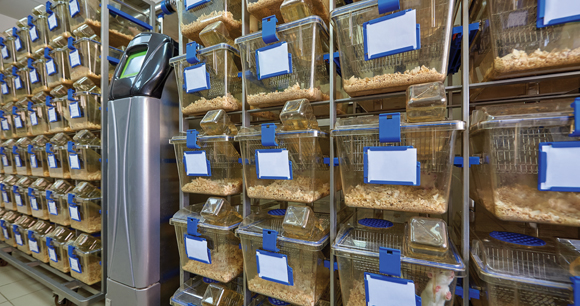In the United States, the number of rats and mice used each year for experimentation, testing, and teaching is shrouded in secrecy. The current industry estimate, as reported in Science, is somewhere between 10 and 25 million. However, a new calculation based on data collected from 16 large American research facilities has been offered by Dr. Larry Carbone in Scientific Reports. In his January 12 paper, Carbone suggests that the actual number is closer to 111.5 million (more than 99% of the total animals used) and that about 44.5 million of them underwent potentially painful experiments.

Carbone’s paper calls attention to a gaping hole in the Animal Welfare Act (AWA), the primary federal law for the protection of animals in research: It excludes rats and mice (as well as birds). A 1970 amendment expanded the law to “all warm-blooded animals determined by the Secretary of Agriculture as being used or intended for use in experimentation.” However, the regulations for its enforcement, finalized the next year, excluded rats and mice, even though these animals were acknowledged to be the most commonly used. The USDA believed it lacked the staff and money to monitor rats and mice, so it would have to be addressed at a later date. But it wasn’t. Finally, in 2000, the USDA settled a lawsuit over this by agreeing to begin the process of extending AWA coverage to rats, mice, and birds.
Most lab personnel supported this expansion: A survey by Plous and Herzog (1999) found that 74 percent of researchers and Institutional Animal Care and Use Committee members believed that rats and mice should be covered by the AWA. A few years later, Dr. Harry Rozmiarek conducted an informal poll of experienced laboratory animal veterinarians and found that 73 percent felt it was not appropriate to exclude these animals from the law. Over time, many research organizations and some pharmaceutical companies also suggested they were not opposed to the inclusion of rats and mice. A few research leaders even embraced the idea and turned their attention to how the job might be accomplished, with one prominent individual suggesting a phase-in of different types of facilities over time.
But animal research lobbyists kept fighting in court and making Chicken Little arguments about vital research being costed out of existence (despite the reality that only substandard labs would be expected to incur costs). Ultimately, they found a champion in Senator Jesse Helms who, without a single congressional hearing on the subject, secured a narrower definition of animals covered under the AWA as part of the 2002 Farm Bill. Rats of the genus Rattus, mice of the genus Mus, and birds bred for use in research were thereby excised from the law itself, not just ignored in its regulations.
Some in the industry have suggested that the National Institutes of Health (NIH) and AAALAC International (an accrediting body) already monitor the treatment of rats and mice in research. But both the NIH and AAALAC have inherent conflicts of interest regarding this issue. The NIH funds the animal experimentation it claims to monitor, while research facilities pay AAALAC for accreditation. The NIH has just three staff tasked with “overseeing” compliance at nearly 1,500 facilities, while AAALAC conducts scheduled site visits only once every three years. Thus, the USDA is uniquely suited to handle this responsibility.
If rodents were covered under the AWA, the actual number in use would be reported just as it is for other warm-blooded animals in research, and the animals would benefit from its protections regarding their housing, handling, veterinary care, transportation, and use (including consideration of alternatives to any potentially painful procedures). Researchers using them would also be subject to the USDA’s unannounced compliance inspections. This change in the law is decades overdue.